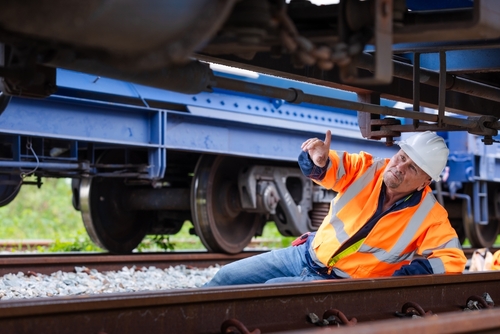
Democratic senators said in a letter to the Federal Railroad Administration (FRA) they are concerned with requests to reduce track safety inspections and loosen requirements to fix defects.
U.S. Sen. Maria Cantwell (D-WA), ranking member of the Senate Committee on Commerce, Science and Transportation, joined several other Democrats in writing the letter to the Drew Feeley, Deputy Administrator of the FRA after the Association of American Railroads (AAR) requested a waiver on the safety inspections and repairs. Cantwell was joined by U.S. Sens. Andy Kim (D-NJ), Ruben Gallego (D-AZ), Edward Markey (D-MA), John Fetterman (D-PA), Tammy Baldwin (D-WI), Richard Blumenthal (D-CT), Tammy Duckworth (D-IL), Dick Durbin (D-IL), Lisa Blunt Rochester (D-DE), Gary Peters (D-MI) and Kirsten Gillibrand (D-NY).
“We are supportive of the deployment of advanced safety technologies; but the Federal Railroad Administration should take care not to allow railroads to become overly reliant on technology,” the senators. “We are concerned that the AAR’s proposal would do just that, reducing the inspections for all track safety issues that are currently inspected by humans in exchange for potentially improving the inspection of track geometry issues.”
According to the law makers, the Biden Administration made rail safety a priority, and freight railroad derailment rates decreased by 18 percent last year, the largest reduction in the derailment rate in 40 years. The Congress members said the AAR’s letter was seeking to make changes to track safety inspections and repair requirements in exchange for deploying automated track inspection (ATI) technology.
The law makers said while Congress understands that the inspection technology works, having been around since the 1970s, the exemptions from safety requirements the association is requesting could increase safety risks.
“While automated track inspection technology is more effective at identifying track geometry defects, there are other safety issues that visual inspections may identify that automated track inspections may not,” the letter said. “In fact, track inspectors are trained to look for 17 other kinds of track safety issues, other than track geometry issues, that could cause derailments, including broken rail ties, missing track spikes, and obstructions in the right of way that a train could hit. The waiver does not explain how reducing railroads’ obligation to check for the track issues that ATI technology cannot detect by up to 75 percent will reduce derailments.”
Additionally, the senators said, the waiver requests railroads that use ATI machines should be allowed to take up to 72 hours to address track safety defects once they are identified, instead of fixing them immediately, as required currently.
“If approved, this waiver would allow passenger trains and trains carrying crude oil, vinyl chloride, benzene, and other hazardous materials to travel over track with a known safety issue for up to three days,” the letter said. “The waiver does not explain how slowing remediation response times for track safety defects will improve safety.”
A National Safety Transportation Board investigation found in September 2021, in the Amtrak Empire Train derailment in Joplin, Montana, that automated track inspections “do not capture the diverse array of unique hazards detectable to human inspectors,” and suggested that they “should not be used to supplant an inspector physically examining a track.”
The senators asked the FRA to deny AAR’s waiver, and to finalize the Biden Administration’s proposal on the use of railroads and ATI technology.